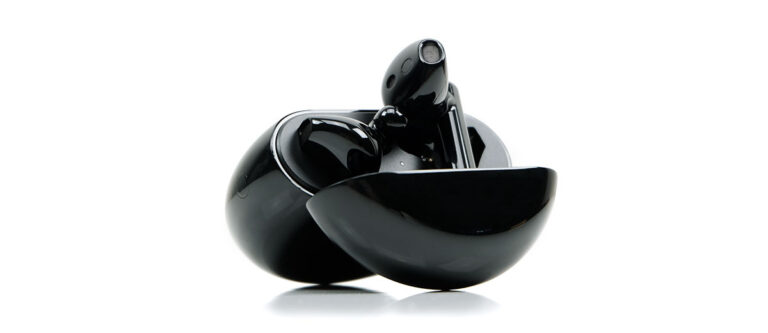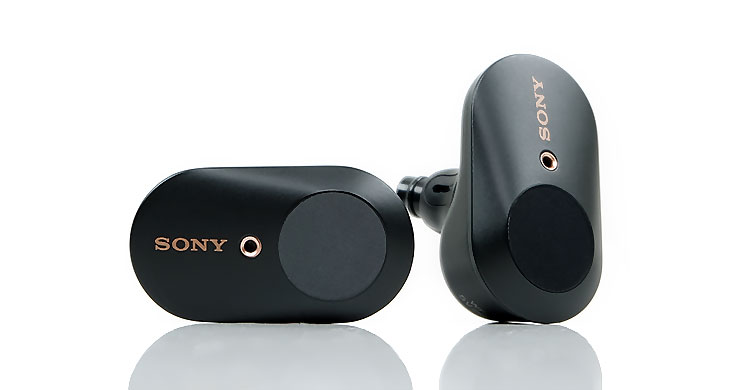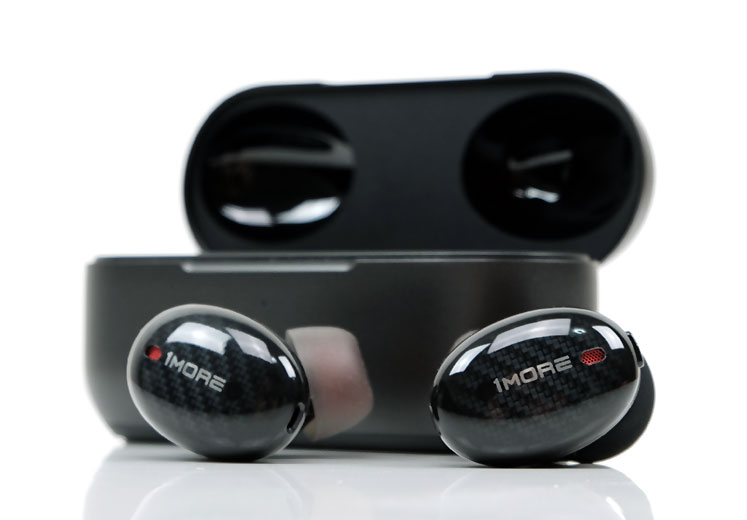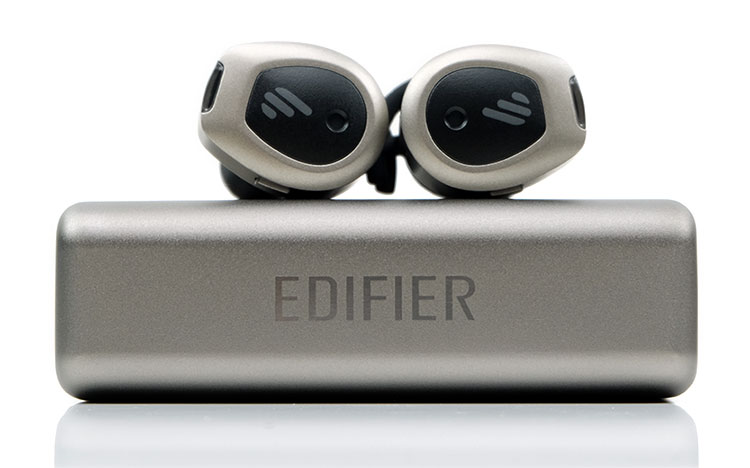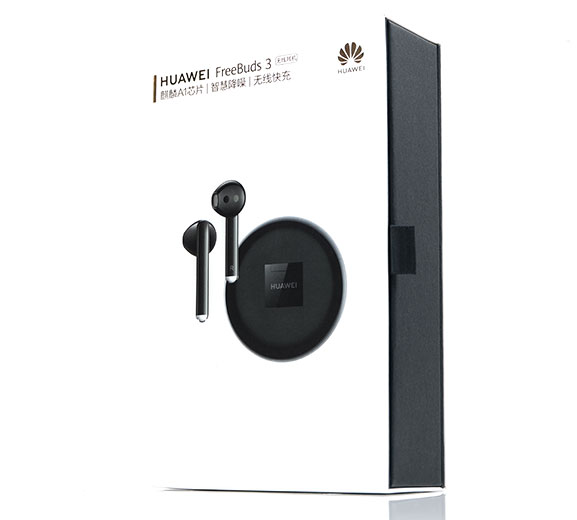Performance Impressions
Sound Summary
I actually really like the balance and emphasis on the Freebuds 3 signature though I will be the first to admit if you like a powerful planted low-end then find something else.
This is a relatively n-shaped midrange performer with a mild mid-bass bump and some warmth but otherwise a typical earbuds experience. It sounds wonderfully open, expansive, and nicely balanced for those that place a heavy duty on a natural vocal presence and staging width.
Whilst the treble is not overly forward it has just enough to retain that airy sound and keep the instrumental and vocals on the right side of natural. Not too warm, not too dull but rather inviting and smooth.
Now the ANC is not that powerful compared to in-ear ANC competitors. However, for an earbuds guy, the experience is like an answer in how they might sound if they had a set of tips on them but retained that open sound.
ANC allows you to focus, bring in a bit more clarity and a better appreciation of this driver’s agility. There is nothing slow about the Freebuds 3 sound and thankfully so. The lack of huge bass bloom and decay is a blessing for me and my own mids preference but it gives it a bit of welcome balance.
This is not a TWS for EDM, but rather the audiophile standards, the hi-fidelity jazz sets, and ‘midsy’ rock numbers where balance is key.
Timbre
In a word, creamy. I love the ‘inviting’ and euphonic timbre on the Freebuds 3. Of course, the resolution is not top-tier stuff but the balance is excellent, particularly if you love your midrange and vocal presence.
And that is why creamy works on the Freebuds 3. The sound does not suffer from a strong contrast of low-end and treble so the overtone is not brittle or overly rounded. There is no overindulgent bass bloom or sucked out lower-mids. The transition is also very smooth which means instruments are not only sweet on the timbre but to the fore and out wide.
Staging
And wide is the one salient feature of the Freebuds 3 staging. Not so much depth so do not expect this to add too much to any bass fundamental. The height is ok but they do sound very open and wide in the mids.
Instruments have excellent separation and benefit from an airiness to the delivery. Vocals are to the fore, especially female vocals so they are front and center a little more but not artificially so.
Wireless Performance
Pairing
I had no issues with the pairing of the Freebuds 3 with either 2 smartphones, the FiiO M15 flagship DAP, or an Acer Nitro 5 laptop using Windows 10. In all instances, the drivers showed up as a singular device, “Freebuds 3”, as opposed to separate left and right drivers.
You can, of course, hook one up without the other even after the initial pairing and that side will play just fine. Even better if you take the other one out of the cradle it will automatically sync with the second channel and output stereo with only minimal interruption.
Stability & Range
(This was tested with a Huawei P20 and Samsung Note 9, and an Acer Nitro 5 Windows 10 laptop as the transmitting sources).
I would place the Freebuds 3 into the medium pack of TWS we have reviewed thus far for range but no issues on stability which was rock solid throughout its range. The Freebuds 3 are good for 10m range and even with one wall, we got zero dropouts.
It did struggle however when a second wall was introduced in my kitchen enclave test. A test that all but 4 have failed to be fair. It did not manage to go as far as the HELM TW5.0, Fostex TM2 of the excellent Edifier TWS NB, (review soon). However, it was on par with the Sennheiser MOMENTUM True Wireless and better than the Lypertek TEVI.
Latency
Latency is slight with a required 0.2s using VLC on Windows 10 (Acer Nitro 5 laptop) to keep it absolutely tight. That is in line with the Edifier TW NB and 1MORE’s new True Wireless ANC but not as good as the class leaders I have tested thus far, the Sennheiser MOMENTUM True Wireless and the Sony WF-1000XM3.
Select Comparisons
Sony WF-1000XM3
$230
Technical
The WF-1000XM3 is still Sony’s flagship almost a year later and stands out due to its inclusion of ANC right from the off. The price point is fairly high compared to the Freebuds 3 but street prices can often dip below $200 on promos.
Differences
Beyond the ANC both of these TWS systems have a very different approach. The first is the most obvious and that is the form factor with the WF-1000XM3 using a more traditional in-ear design and the Freebuds 3 opting for the open buds style. Everything from the sound presentation to the fit, tips, comfort, and the seal is different in a big way.
Ironically, it is the Freebuds that are more secure than the WF-1000XM3 in the ear. The WF-1000XM3 are a little top-heavy in their design so you need a fairly sizeable tip to edge and hold securely. The Freebuds 3 hang and somehow defy gravity.
In terms of drivers, the Sony uses a much smaller 6mm dynamic driver compared to the 14mm inside the Freebuds but do not let the size gap fool you. The larger dynamic driver of the Freebuds 3 is par for the course for earbuds in traditional audio and does not amount to double the performance.
The Freebuds 3 are IPX4 rated whereas the WF-1000XM3 has no such element resistance rating. I would not advise getting the WF-1000XM3 wet under any circumstances.
Similarities
Neither of these TWS offers aptX decoding, both work on SBC and AAC only. Both of them use USB-C charging though the Freebuds 3 goes further with Qi quick charging capabilities. Each TWS offers its own fairly well-developed app.
However, the Sony app version has quite a few more features such as 360 Reality Audio and a built-in EQ. Whereas the Freebuds 3 app feels simpler and more intuitive to use, especially with EMUI 10 and its quick pairing process.
Battery life is not great on either with perhaps the Sony doing better on 6 hours per driver for music and 18 hours on the bigger cradle. The Freebuds 3 only offers 4 hours on the drivers and 16 on its smaller and more pocketable cradle. The Freebuds 3 does charge a lot faster at 1 hour compared to 2.5 for the Sony.
Performance
(This was tested with a Huawei P20 and Samsung Note 9, and an Acer Nitro 5 Windows 10 laptop as the transmitting sources).
The Sony WF-1000XM3 does not operate on an independent left-right functionality basis wheres the Kirin A1 inside the Freebuds 3 will deliver isochronous Bluetooth connectivity. That will mean the Freebuds 3 has a bit more flexibility when it comes to battery life and usage scenarios.
Paring on both have similar routes with a traditional pairing via your source BT panel or via their app. I give the edge to the Freebuds 3 with EMUI 10’s super easy process but on EMUI 9 and below both are very easy to scan, identity and pair.
I honestly did not find much of a difference between these two when it came to the overall range and stability. Both were easily 10m in a straight line with one wall dividing but neither performed that well with an additional wall (my kitchen enclave). I can go further without dropout on the likes of the Helm TW5.0 and Astrotec’s S80 which are cheaper.
The WF-1000XM3 performed a little bit better with regard to latency. We used a fairly low-grade media file with a stereo audio BIT rate of 31kbps on Windows 10 with VLC and found the Freebuds 3 required a sync of around 0.2s to sound tight with the video track.
The WF-1000XM3’s seemed quite comfortable with no sync adjustment required on the same track but 0.1s hasten felt super tight.
ANC
The ANC is tighter on the Sony. Not only does it offer an enhanced dB suppression of 16.5dB compared to the Freebuds 3 15dB but also the in-ear tip method does better than the open airbud style. The Sony’s require less placement tweaking also to keep the ANC optimal which can be a weak point on the Freebuds 3. Both can also adjust the amount of ANC via their respect apps.
Tuning
First, the Freebuds 3 seem easier to drive than the Sony’s on both the Note 9, (dual audio) and the P20. The Sony’s are a shade easier when they are the only ones connected on the Note 9.
The contrast between these two is quite stark. The WF-1000XM3 is thicker, richer and heavier sounding. It has a much deeper bass response, sounding planted, powerful and warmer up to the upper mids.
By contrast, the Freebuds 3 sound airier and more open with a livelier and more appealing midrange. It is a lighter overtone, sounding quicker with more of a left-right staging effect. Vocals are more forward sounding, almost n-shaped in its delivery compared to the milder slightly v-shaped delivery of the Sony.WF-1000XM3.
Where the Freebuds 3 struggle is the low-end but earbuds lovers will not be terribly surprised by that. They roll off early compared to the WF-1000XM3 with only a faint mid-bass punch and a slither of warmth for instrumental timbre to sound natural rather than cold and thin. You get less power but conversely a bit more instrumental agility and space around its vocal performance which appeals to me.
Treble on the Sony’s can be a bit hard-edged without using its in-built treble EQ tools to tone it down. The Freebuds 3 treble is a little softer but quite well extended. Overall, it sounds the more coherent and pleasing of the two and part of the reason why the mids timbre sounds quite pristine.
1More True Wireless ANC
$199.99
Technical
The True Wireless ANC was just launched in the last 2 months and even now it is still being updated with some firmware affecting all sorts of things. We will be bringing this review to you very soon so apologies if by then we have corrected some of our initial observations below at a later stage.
The 1MORE’s are stuffed to the gills for tech and outside of a weak app strategy, there is much to like about it. This is a dual-driver hybrid single dynamic and balanced armature configuration. A type of design I have not seen since the ill-fated KZ T1 we reviewed earlier in the year.
On top of that, its BT5.0 TrueWireless Stereo Plus aptX capable with USB-C and QI wireless charging capability, a shared feature with the Freebuds 3. It has a mixture of touch and rear physical controls whereas the Freebuds 3 only has a touch control system.
There is more flexibility on the 1MORE button controls then just double-tap single option tweaking on the Freebuds 3. However, I hate the strength required to activate the touch commands on the 1MORE. I was hammering down hard to change up the ANC and it was uncomfortable.
I much prefer the Huawei app over the 1MORE version. It looks better, more intuitive and you can do a bit more with it such as ANC tweaking.
Design
The 1MORE True Wireless ANC has a classic in-ear design compared to the Airbuds stem approach of the Freebuds 3. You could argue, that despite the very long design of the Freebuds 3 they are a bit sleeker. Lower profile the Freebuds 3 are not due to the stems, however, the 1MORE will stick out of the ear quite bit as it is relatively deep.
Both are quite steady in the ear with the unique design of the Freebuds 3 somehow keeping everything in place and ear hooks keeping the 1MORE in place. The 1MORE does feel the more comfortable of the two with the tips instead of hard plastics. The Freebuds 3 can be unforgiving after a while if in the wrong position.
Cradle
The 1MORE cradle is bigger but less style. It does the job but not as nice looking as the bigger Edifier TWS NB case or as sleek and pocketable as the Freebuds 3 pebble.
Battery life is just marginally better on the True Wireless ANC at 5 hours with ANC and 6 hours with it off. The Freebuds 3 come up short at 4 hours with 16 hours additional from the cradle. The 1MORE cradle is the same with 13-16 hours max from its cradle.
ANC
1MORE doesn’t state the dB attenuation for their True Wireless ANC but I don’t really need to know. They are much more effective than the Freebuds 3 ANC. It is really about how aggressive they block out the low-end and filters the higher frequencies and the 1MORE does it better.
You get two levels of ANC and a pass-through in case you need more noise awareness when using the 1MORE. You can also cycle through them by double-tapping the main touch shell. The first level is the strongest and that’s where I tend to leave the 1MORE ANC.
The IEM form factor and tips on the 1MORE make the difference here. It is admirable how well the open airbuds design performs with ANC but I consider it a bonus rather than a killer feature.
Performance
(This was tested with a Huawei P20 and Samsung Note 9, and an Acer Nitro 5 Windows 10 laptop as the transmitting sources).
Pairing is dead easy with both TWS on the tested platforms. Straight out of the box both showed up on the smartphones and Windows Laptop and pairing was smooth and instant.
Both TWS performed very similarly for stability over range. I got both 10m stable with no dropouts with one wall between a P20 and Note 9 smartphone source. However, both crapped out just as I went behind the 2nd wall into my kitchen enclave which is about an additional meter extended.
The Helm TW5.0 is still the top dog for range with the Fostex TM2 and Astrotec S80 just behind in pack 2. These fall into pack 3 which is a middle of the range performance with the likes of the Sennheiser MOMENTUM True Wireless. The likes of the TEVI from Lypertek are in tier 4.
In terms of latency, the 1MORE True Wireless ANC performed to the same level as the Freebuds 3 for audio sync. We took the same low-grade media file with a stereo audio BIT rate of 31kbps on Windows 10 with VLC and both required a 0.2s hasten sync tweak to look and sound tight.
Tuning
The 1MORE True Wireless is unashamedly v-shaped with a sub-bass cannon, a forward and strong 1-2k midrange vocal presence and an elevated lower treble for contrast and ‘excitement’. The Freebuds 3 cannot be any more different than this save for the forward vocal focus.
The Freebuds 3 is much more n-shaped with an open and wide midrange, a lightish timbre, an airy but smooth upper mid and lower treble timbre and a flat low-end with some roll-off.
The 1MORE has a greater sub-bass emphasis that dips into the lower mids to suck out the bloom and bleed into the vocal range. That keeps the vocal presence relatively clean and clear though instruments are quite a bit behind staging-wise.
The Freebuds 3 have far less depth and power but a deliver more satisfying lower-mids instrumental presence and a more natural instrumental timbre. The 1MORE timbre can, at times, sound quite thin, especially the upper mids percussion and ‘handclaps’ which have a metallic edge to them.
Treble on the 1MORE is more forward on the lower treble but as mentioned above have this slightly thin and hard-edged quality from the BA driver. Certainly, you can argue it has a perception of clarity and better extension than the Freebuds 3 but for me, the Freebuds treble is far more pleasing.
Edifier TWS NB
$119.99
Technical
Like the 1MORE True Wireless ANC, the Edifier TWS NB is new for 2020 and like the 1MORE we will be reviewing it very shortly in full. So, all our observations below are initial impressions based on the short time we have had with it thus far.
One thing I can tell you that this might be the bang for buck so far for 2020 for ANC TWS at just $119.99. There is a lot of features for not so many greens in the NB.
This is a Qualcomm QCC3026 BT5.0 capable TWS with ANC as well as environmental noise control via cVc 8.0. It also handles up to aptX in terms of decoding as well as SBC and AAC. Surprisingly, neither have onboard volume control.
As far as I know, the Freebuds 3 only handles up to SBC and AAC though it has an edge with BT5.1 as well as also offering ANC. Both are IPX4 rated for splash resistance.
The Edifier TWS NB has a huge 13mm graphene dynamic driver. Yes, that is smaller than the 14mm driver inside the Freebuds 3 but that is huge for an in-ear TWS whereas a 14mm driver is a par for the course for most buds.
Design
The Edifier TWS drivers are made from a hard plastic by the looks of it. However, the design is pro-level in the finishing albeit it is rather deep so they stick out a bit. In the wired world, that’s normally an issue but in TWS world access to buttons are much easier if they are not as flush in the ear.
The Freebuds 3’s stem style is very different in application and looks but again, plastics with a smattering of metal and professionally done. The Edifier does use a hook system much like the 1MORE variant which does help with keeping everything steady.
Cradle
Love the Edifier cradle though it is very different from the Freebuds 3 smooth rounded pebble version. For one, it is more rectangular and boxy, bigger but beautifully contoured with a thought full set of clasps inside that hold the driver securely in place.
The Edifier TWS NB drivers have more charge time at 5 hours compared to 4 on the Freebuds 3 with ANC on. They also have a much bigger cradle capacity of 22 hours compared to just 16 for the Freebuds 3. The Freebuds 3 does have Qi wireless charging whereas the Edifier does not and both do use USB-C with fast charging as an option.
ANC
Like the previous two IEM style ANC TWS systems, the Edifier TWS NB is a stronger performer with regards to noise attenuation compared to the Freebuds 3. Again, the fitting and AI Life tweak will help to optimize the Freebuds 3 overall performance but it doesn’t quite flatten the rumble and creaks on an air-con quite like the Edifier.
The Freebuds 3 tend to focus more on the very low-end and let a bit more lower-mids to treble frequency slip in. The Edifier flattens it down a lot more with way less higher frequencies ambient noise slipping in.
Performance
Like most of these more expensive TWS systems, I have yet to encounter any issues with pairing. Both the Freebuds 3 and the Edifier TWS NB were found pretty easily by our source devices, the Huawei P20, Samsung Note 9 and an Acer Nitro 5 Windows 10 laptop.
For stability and range, the Edifier is the clear winner. Now you will have to wait for the main review to get an absolute confirmation but this might be up there with the HELM TW5.0 as the best performing TWS I have reviewed to date for range.
It easily sailed past 10m with one wall and I got right to the end of the kitchen enclave with a 2nd wall thrown in and not once did it drop a signal. The Freebuds 3 did fine with one wall up to 10m but crapped out only a few cms into the kitchen enclave and that second wall.
Latency performance on both TWS came out the same at 0.2s hasten on VLC with a media file using a stereo audio BIT rate of 31kbps on Windows 10. Both felt slightly wayward without syncing adjustments.
Tuning
The pattern here is quite similar to the comparison between the 1MORE True Wireless and the Freebuds 3 except for one key area, the upper mids, and treble tuning. That could be put down to the Edifier using that large 13mm graphene dynamic driver instead of going for a hybrid approach. The treble here is more liquid sounding and relaxed and that makes a big difference.
In any event, this is fairly u-shaped, just slightly more forgiving on the treble and not so strident on the upper mids as the 1MORE. The sub-bass is very powerful, very deep but not quite as heavy as the 1MORE.
Certainly, compared to the Freebuds 3 it is night and day. The Freebuds 3 open design really flattens the bass down in terms of power though it has punch and a bit of warmth. Still, nowhere near as deep as the sub-bass performance of the Edifier.
And like the 1MORE comparison, the Freebuds 3 is more satisfying in terms of how open and expressive the mids are. The Edifier mids are more dipped and muted in deference to the low-end power. They do have a little bump post 1k for vocal presence but not as engaging as the Freebuds 3 delivery which sounds more balanced.
One thing I will note is the treble timbre. You get a shade more contrast on instrumental notes but the Edifier lacks that brittle sound of the 1MORE ANC sounding a lot wetter. The Freebuds 3 are a shade richer and more rounded for me with slightly less treble forwardness.
Our Verdict
If you love earbuds then the Freebuds 3 is pretty much your wireless alternative. That tonal balance, the open and very wide staging with a creamy timbre is addictive and supremely easy to listen to. If you need the low-end, the power and a more planted feel to your music then the in-ear alternatives are more suitable.
The ANC is a topic worth debating. If you want proper attenuation then it is not good enough for that. You will require a lot of fiddling also to get just right and that includes the cool app ANC software control.
However, if you are an earbuds guy the effect is a lot of fun and something you wish analog earbuds could do. It really helps focus in on the music just that little bit more and it does make a palatable difference to your listening.
The price is fair for the feature set, the build of the drivers is good but the cradle is awesome. It looks cool unboxed, to be honest. The whole Freebuds 3 experience was an enjoyable surprise for me. Regardless of how “fashionista” those stems look in my ears, they sounded much better than I expected them to be.
Huawei Freebuds 3 Specifications
- Bluetooth version: Bluetooth 5.1 and Bluetooth 5.1 LE
- Bluetooth Chipset: Huawei Kirin A1
- Battery: 30 mAh (min.) (per earbud), 410 mAh (min.) (charging case)
- Charging Interface: wired: USB Type-C (5V 1.2A 6W), wireless: Qi standard (2W)
- Playtime: 4 hr. playback on 1 charge, 20 hr. playback with charging case
- Driver: 14.2 mm dynamic driver
- Dimension: 41.5 x 20.4 x 17.8 mm (per earbud), ⌀60.9 x 21.8 mm (charging case)

